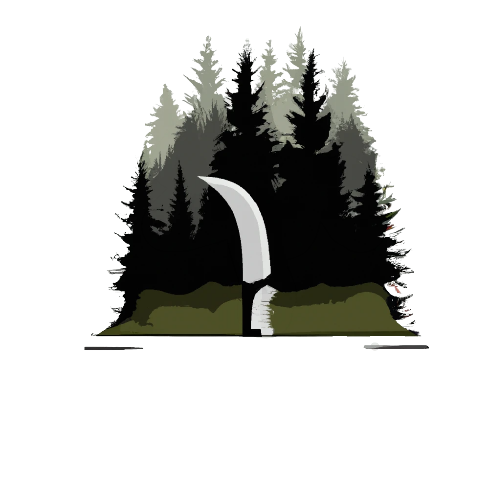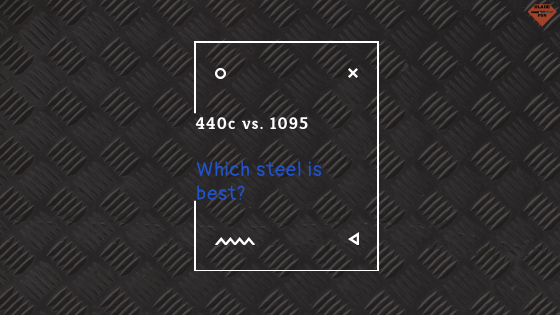440C and 1095 are two widely used steels with distinct characteristics. Both of these knives are known for their toughness and are often found in similar price ranges. So it would only make sense to compare them. So in this article, we will compare these two steels to see which is better and why.
Short Answer
440C, a stainless steel, is known for its corrosion resistance and a good balance of toughness and edge retentive abilities. 1095, a high-carbon steel, excels in toughness and keeping its shape under heavy use.
Now that we have looked at the short answer, we can look at each knife steel, which steel is better, and the best knives in each steel.
In-Depth Look at 440C
440C is a high-chromium stainless steel renowned for its corrosion resistance and balanced performance.
Here is what 440C is made of:
- Carbon: 0.95-1.20%
- Chromium: 16.00-18.00%
- Molybdenum: 0.75-1.00%
- Nickel: 0.50%
- Vanadium: 0.10-0.30%
- Manganese: 0.75%
- Silicon: 1.00%
- Phosphorus: 0.04%
- Sulfur: 0.03%
Corrosion Resistance: 440C is highly resistant to corrosion due to its high chromium content, making it an excellent choice for knives used in humid or corrosive environments.
Edge Retention: It offers okay edge retention, although it might not match the longevity of high-end steels designed solely for this purpose nor like tool steel or tougher overall steels.
Toughness: While not as tough as some non-stainless steels, 440C maintains a reasonable balance of hardness and toughness.
In-Depth Look at 1095
1095 is a simple, high-carbon non-stainless steel celebrated for its toughness and ease of sharpening.
Here is what 1095 is made of:
– 0.95% carbon
– 0.4% manganese
– very small traces of phosphorus and sulfur
Toughness: 1095 is highly tough, making it resistant to chipping and breakage, especially under heavy use.
Edge Retention: While not on par with high-end steels, 1095 is easy to sharpen and retains a serviceable edge.
Corrosion Resistance: 1095 is susceptible to corrosion and requires diligent maintenance to prevent rusting.
In-Depth Comparison of 440C and 1095
Corrosion Resistance: 440C has excellent corrosion resistance due to its chromium content, while 1095 lacks stainless properties and requires lots of maintenance to prevent rust.
Edge Retention: Because of the tougher nature and simpler balance of elements in 1095, it is going to be a more edge-retentive steel.
Toughness: 1095 is one of the toughest steels out there, so it is no surprise that it is tougher than 440C.
Sharpening: Generally, the better a knife is at keeping an edge, the harder it is to resharpen. So 1095 is going to be more difficult to sharpen than 440C.
Applications: 440C is suitable for environments where corrosion resistance is crucial. 1095 is preferred for outdoor and survival knives where toughness is of upmost importance.
Best knives in each steel
Now that we have looked at each steel in-depth, when you would want one steel over the other, and why, we can look at what the best knives in each steel are.
SOG Tellus ATK (440C)
The Tellus ATK is an EDC folding knife that is both tough and affordable. The Tellus ATK has a 3.5-inch 440C blade, a frame blade lock, a textured GRN handle, and an open design to allow easy cleaning. If you want a workhorse of a knife that comes at an affordable knife this is one you should look at.
Check out this knife here (link to Amazon)
ESEE-4P (1095)
The ESEE-4 is a versatile fixed blade knife that is perfect for bushcraft. This knife has a 4.5-inch blade, a 3.5-inch G-10 handle, an ambidextrous polymer sheath, a textured powder coat finish, and weighs 8 ounces. If you want a tough fixed blade that can handle any task, this is the knife you should look at.
Check out this knife here (link to Amazon)
Conclusion
1095 is a tough steel best used for tasks when you need a knife that can take some punishment and come out unchanged. 440C is better for corrosion-inducing environments where you need a knife with a good balance of toughness and edge retention.

